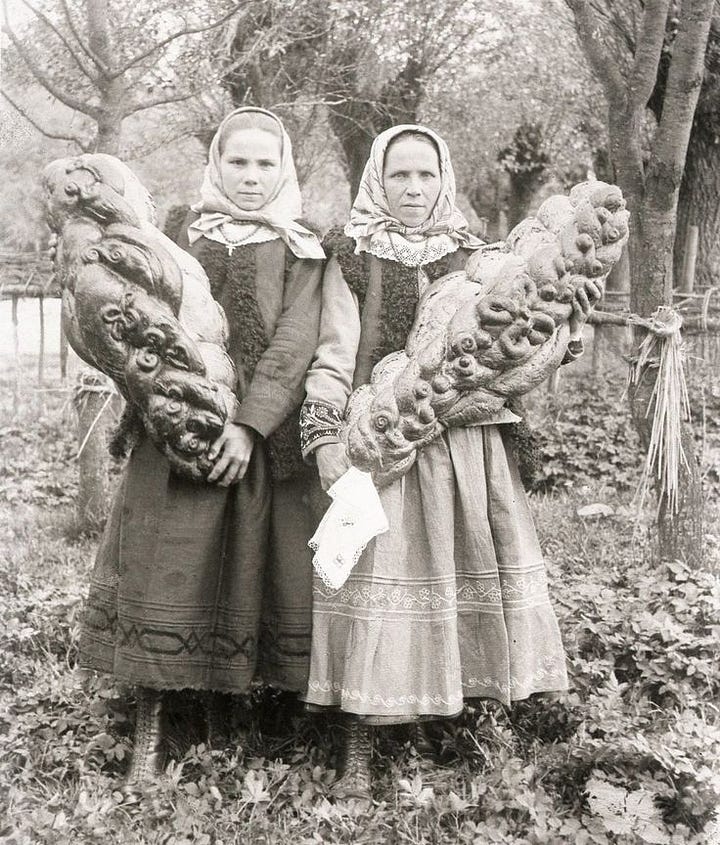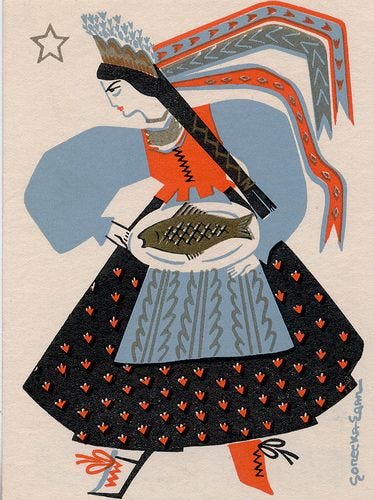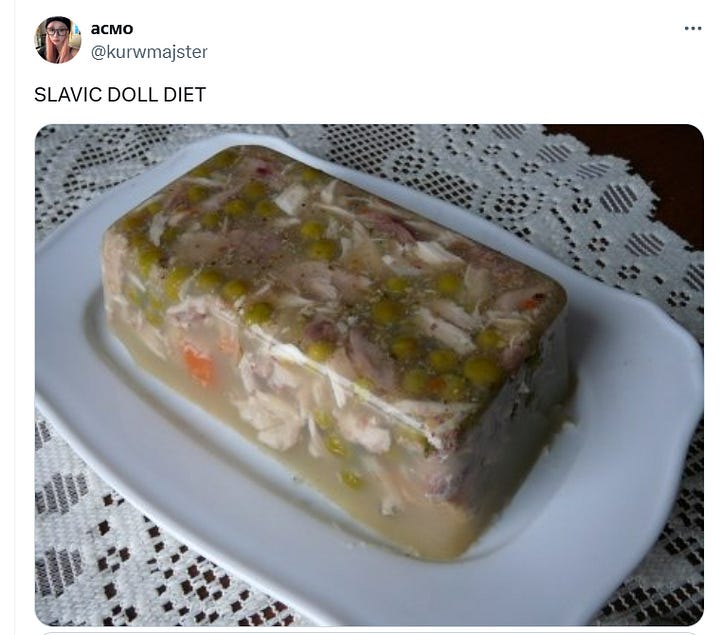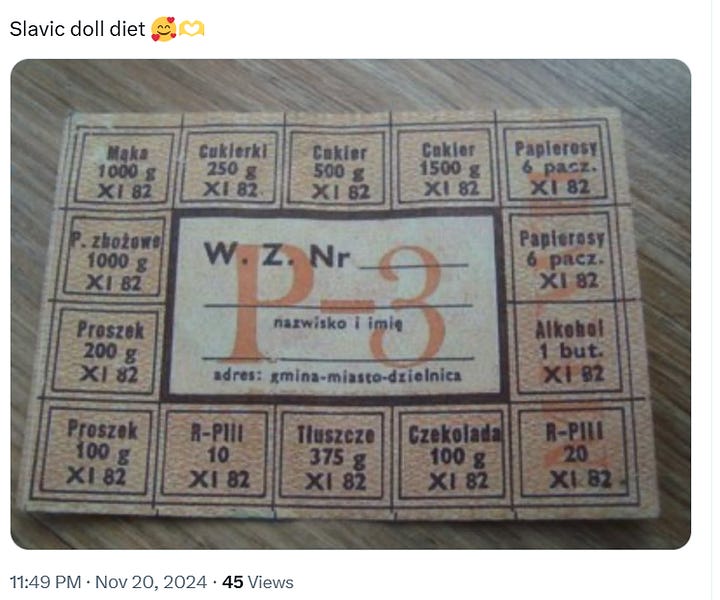Babe what's wrong? You've barely touched your buckwheat and avocado
'Slavic doll diet': the masking of unhealthy trends and spreading of cultural misconceptions


By now we are all familiar with the misconceptions created by Westerners on Eastern Europe. Usually it consists of a grey and somehow still communist setting in modern, where you can expect to see crime and villains as the characters in the story (with the exception of Dorota from Gossip Girl of course). On social media we have seen the emergence of the ‘slavic doll’ trend or the ‘slavic bimbo’ trend which comes around every year as soon as winter comes.
This year is no different of course, as soon as the temperature drops below 0°, мой мармеладный (muah muah song) by Katya Lel starts trending and the fur coats come out.
But, instead of obsessing over the perfect snowy fur and ‘bimbo aesthetic’, people are hooked on buckwheat and it’s supposed effects on achieving the ideal ‘slavic doll’ body. Growing up in a Polish household, I am no stranger to eating buckwheat and other Slavic foods, but buckwheat is usually accompanied by a sauce, mushrooms and/or grilled meat and can even be found in soup. It’s been popular for what feels like forever in Poland, loved by peasants and royalty alike - such as Anna Jagiellonka in the 16th century and now finding fame on TikTok of all places. How has a simple grain known for being cheap and filling been associated with diet culture?
In the videos, Americans are pairing buckwheat with avocado and eggs and claiming that it’s the Eastern European’s secret of keeping a skinny physique. This unexpected portrayal created by Americans on TikTok has already attracted a lot of negative comments from Polish people and other Eastern Europeans over the inaccuracies portrayed on social media.
In response to the recipe videos, Polish women are sharing traditional recipes on TikTok to show the hearty dishes which are actually prepared, such as preparing buckwheat correctly. Others are also sharing actual Slavic food which would put Americans in a coma, such as the dreaded meat jelly.
Some are even sharing pictures of food cards from PRL or communism which show the dark side of the struggles associated with food and the long queues people had to stand in for hours just to get basic food items in 20th century Eastern Europe.


The masking of diet culture
As the year is coming to a close, we can collectively agree that one of the biggest 180’s we have witnessed is the comeback of the skinny model - through the Ozempic craze and the return of the OG Victoria’s Secret fashion show.
British Vogue editor, Chioma Nnadi said that the popularity of Ozempic is partly to blame when talking with BBC. As a society we are back to the noughties unhealthy beauty standards, ostensibly trends shift with it. Rather than trying to embody the dreamed Slavic winter girl image by dressing up as a Russian doll in a furry hat and vintage fur coat, the videos under the hashtag range from the subtler avocado and egg recipe videos to diet ‘hacks’ only eating buckwheat two times a day and the dreaded ‘nothing feels good as skinny feels’ sound of Kate Moss.
The rebranding of diet culture on TikTok and other social media is even worse, as it facilitates the masking of unhealthy trends, such as the ‘slavic doll trend’ which is subtly instilling this content without many of us even noticing the hidden meaning at first.
Chloe Gray says that we have “gone full circle with diet culture” in her Cosmo article:
Once you might have been able to spot the #ThinSpo and #ProAna content from a mile off. But over the years, there’s a form of diet culture that has quietly – and then loudly – rebranded itself as ‘betterment’.
The trend ostensibly has a snow ball effect to the already existing issues we are facing with diet culture and the perception people have of Slavs. Even though the slavic doll trend is relatively new, its probably just a new form of what we have already seen in the past, just catered to a new viewer on social media.






